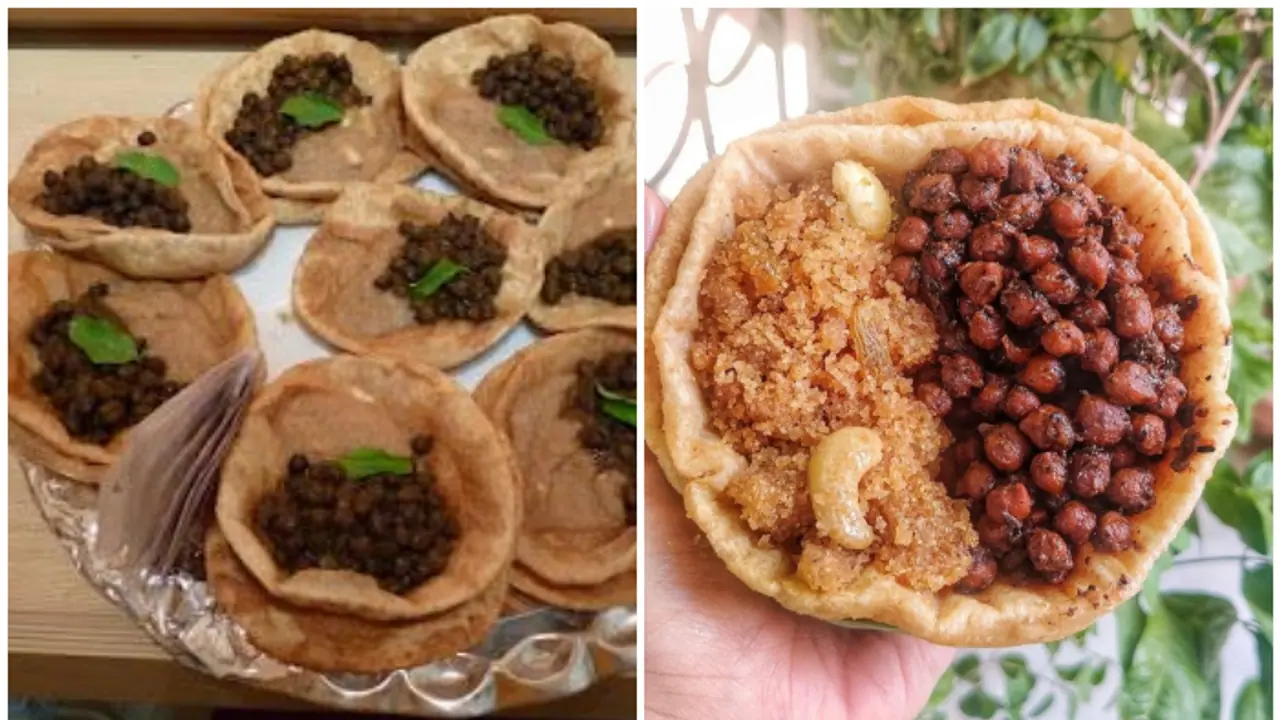Ashtami and Navami during Navratri celebrate Goddess Durga, featuring the symbolic dishes of poori, halwa, and kale chane, each representing abundance, sweetness, and strength.
Ashtami and Navami celebrated during the auspicious festival of Navratri, hold significant cultural and spiritual importance in Hindu tradition. These days are dedicated to honoring the divine feminine energy embodied by Goddess Durga. A cherished practice during these celebrations is the preparation of a special meal that includes poori (deep-fried bread), halwa (a sweet dish), and kale chane (black chickpeas). Each dish carries its own symbolic meaning and significance, enhancing the festive spirit.

Symbolism of the Dishes
Poori: The golden, fluffy pooris are not just a delicious addition to the meal; they symbolize prosperity and abundance. The act of frying pooris in oil is seen as an offering of gratitude to the goddess for her blessings. The round shape of the poori also represents completeness, signifying the wholeness of life and the nurturing aspect of the divine mother.
Halwa: Typically made from semolina, sugar, and ghee, halwa represents sweetness in life. During Navratri, it is offered to the goddess as a gesture of devotion. The rich, aromatic halwa serves as a reminder of the sweetness of spiritual fulfillment and the joy that comes from divine blessings. Sharing halwa with family and friends further strengthens communal bonds, embodying the festive spirit.
Kale Chane: Black chickpeas are often prepared as a nutritious component of the meal. Rich in protein and essential nutrients, kale chane signifies strength and resilience. The goddess is often worshipped for bestowing these qualities upon her devotees, making the inclusion of kale chane particularly meaningful. The earthy flavor complements the richness of the poori and halwa, creating a balanced meal.
The Ritual of Offering
On Ashtami and Navami, devotees perform a ritual known as "Kanya Puja," where young girls representing the goddess are worshipped and offered this special meal. It is believed that serving these dishes to the young girls brings blessings and prosperity to the household. This ritual not only honors the goddess but also acknowledges the feminine energy that plays a vital role in society.
Therefore, the preparation of poori, halwa, and kale chane during Ashtami and Navami is deeply rooted in symbolism and devotion. These dishes celebrate abundance, sweetness, and strength, embodying the spirit of the festival. As families come together to share this meal, they reinforce their connection to tradition and spirituality, making Navratri a truly special occasion.
ALSO READ: Mahalaya 2024: Why is it observed before Navratri? Here's what you should know
